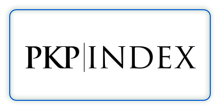THE RELATIONSHIP BETWEEN BENDING STRENGTH AND POROSITY IN CERAMIC BRICK THAT CONTAINS VERMICULITE
DOI:
https://doi.org/10.29121/ijoest.v8.i3.2024.593Keywords:
Ceramic, Brick, Vermiculite, Bending Strength, Porosity, CorrelationAbstract
This study focused on the characterization, product, and relationship between bending strength and porosity of ceramic bricks with added vermiculite. To achieve this goal, pre-made bodies containing 0%, 10%, and 20% calcined vermiculite by weight were mixed in to create the body compositions. Alumina ball manufactories homogenized fusions (60 rpm, 24 hours) were molded through uniaxial dry pressing (100 MPa). Additionally, the arranged samples were heated to a temperature of 800-1000 °C for a duration of 1 hour. Tests involving phase analysis (XRD), microstructure (SEM), mechanical properties (three point bending), and physical characteristics (Porosity, water absorption, shrinkage and bulk density) were carried out on the demitasse bodies that were manufactured. The data that was collected was displayed in graphs and tables, showing the results. As a result, the packages containing samples of vermiculite were effectively created, and the best parameters were easily displayed. The findings indicate that the quality of flawed packages improves as calcined vermiculite levels rise. Following the characterization results, the correlation between bending strength and porosity was investigated. Correlations, t-tests, and p-values were computed. The inclusion of vermiculite in ceramic bricks results in a significant negative correlation of -0.769 between their bending strength and porosity characteristics.
Downloads
References
Achik, M., Benmoussa, H., & Oulmekki, A. (2021). Evaluation of Technological Properties of Fired Clay Bricks Containing Pyrrhotite Ash, Construction and Building Materials, 269. https://doi.org/10.1016/j.conbuildmat.2020.121312
Anitha, A., Kalpana, V.G., & Muthupriya, P. (2023). Influence of Vermiculite and Sintered Fly Ash in Robustness and Hardened Properties of Light Weight Self-Compacting Concrete, J. Ceram. Process. Res, 24(1), 182-189.
Aouba, L., Bories, C., Coutand, M., Perrin, B., & Lemercier, H. (2016). Properties of Fired Clay Bricks with Incorporated Biomasses: Cases of Olive Stone Flour and Wheat Straw residues, Construction and Building Materials. 102(1), 7-13. https://doi.org/10.1016/j.conbuildmat.2015.10.040
Effting, C., Güths, S., & Alarcon, O. E. (2007). Evaluation of the Thermal Comfort of Ceramic Bricks, Materials Research, 10(3), 301-307. https://doi.org/10.1590/S1516-14392007000300016
Elavarasan, S., Priya, A.K., & Kumar, V. K. (2021). Manufacturing Fired Clay Brick Using Fly Ash and M−Sand, Materials Today: Proceedings, 37(2), 872-876. https://doi.org/10.1016/j.matpr.2020.06.042
Lee, J. H., & Kim, Y. J. (2009). A Correlation Between a Phase Transition and Luminescent Properties of Sr2SiO4:Eu2+ Prepared by a Flux Method, J. Ceram. Process. Res, 10(1), 81-84.
Monteiro, S.N., & Fontes Vieira, C.M. (2014). On the Production of Fired Clay Bricks from Waste Materials: A Critical Update, Construction and Building Materials, 68, 599-610. https://doi.org/10.1016/j.conbuildmat.2014.07.006
Muñoz, V. P., Morales O. M.P., Letelier G. V., Mendívil G. M.A. (2016). Fired Clay Bricks Made by Adding Wastes: Assessment of the Impact on Physical, Mechanical and Thermal Properties, Construction and Building Materials, 125, 241-252. https://doi.org/10.1016/j.conbuildmat.2016.08.024
Muñoz Velasco, P., Morales Ortíz, M.P., Mendívil Giró, M.A., Muñoz Velasco, L. (2014). Fired Clay Bricks Manufactured by Adding Wastes as Sustainable Construction Material-A Review, Construction and Building Materials, 63, 97-107. https://doi.org/10.1016/j.conbuildmat.2014.03.045
Muñoz, P., Letelier, V., Bustamante, M.A., Marcos-Ortega J., Sepúlveda J.G. (2020). Assessment of Mechanical, Thermal, Mineral and Physical Properties of Fired Clay Brick Made by Mixing Kaolinitic Red Clay and Paper Pulp Residues, Applied Clay Science, 198. https://doi.org/10.1016/j.clay.2020.105847
Ngayakamo, B., Park, S., (2019). Evaluation of Kalalani Vermiculite for Production of High Strength Porcelain Insulators, Science of Sintering, 51(2). https://doi.org/10.2298/SOS1902223N
Onen, U., Ercenk, E., & Yılmaz, Ş. (2017). Development of Machinable Glass-. Ceramics Produced from Vermiculite. Acta Phys. Pol. A. 131, 168-170. https://doi.org/10.12693/APhysPolA.131.168
Park, K.H., & Shin, D.W. (2002). The Correlation Between the Crystalline Phases and Optical Reflectance in Glass Ceramics for IR Reflector, J. Ceram. Process. Res, 3(3), 153-158.
Phonphuak, N., Saengthong, C., & Srisuwan, A. (2019). Physical and Mechanical Properties of Fired Clay Bricks with Rice Husk Waste Addition as Construction Materials, Materials Today: Proceedings, 17(4), 1668-1674. https://doi.org/10.1016/j.matpr.2019.06.197
Prasada, D. H., Leea, J., Lee, H.W., Kim B.K., & Park, J.S. (2010). Correlation between the Powder Properties and Sintering Behaviors of Nano-Crystalline Gadolinium-Doped Ceria, J. Ceram. Process. Res, 11(5), 523-526.
Rashad, A. M. (2016). Vermiculite as a Construction Material-A Short Guide for Civil Engineer, Construction and Building Materials, 125, 53-62. https://doi.org/10.1016/j.conbuildmat.2016.08.019
Sarani, N.A., Kadir, A.A., Abdul Rahim, A.S., & Mohajerani, A. (2018). Properties and Environmental Impact of the Mosaic Sludge Incorporated into Fired Clay Bricks, Construction and Building Materials, 183, 300-310. https://doi.org/10.1016/j.conbuildmat.2018.06.171
Silva Jr, C.N., Pimentel, P.M., Oliveira, R.M.P.B., Melo D.M.A., & Jsilva, E.C. (2014). Preparation of Glass-Ceramics from Vermiculite Clay Mineral, J. Ceram. Process. Res, 15(5), 360-365.
Spirina, V. S., & Flerova, M. I. (1975). Expanded Vermiculite as Heat Insulation Material. Refractories, 16(3-4), 201-203. https://doi.org/10.1007/BF01661229
Sutcu, M. (2015). Influence of Expanded Vermiculite on Physical Properties and Thermal Conductivity of Clay Bricks, Ceramics International, 41(2), Part B, 2819-2827. https://doi.org/10.1016/j.ceramint.2014.10.102
Sutcu, M., Alptekin, H., Erdogmus, E., Er, Y., & Gencel, O. (2015). Characteristics of Fired Clay Bricks with Waste Marble Powder Addition as Building Materials, Construction and Building Materials, 82, 1-8. https://doi.org/10.1016/j.conbuildmat.2015.02.055
Suvorov, S. A., & Skurikhin, V. V. (2002). High-Temperature Heat-Insulating Materials Based on Vermiculite. Refractories and Industrial Ceramics, 43(11-12), 383-389. https://doi.org/10.1023/A:1023449128786
Suvorov, S. A., & Skurikhin, V. V. (2003). Vermiculite-a Promising Material for High Temperature Heat Insulators, Refractories and Industrial Ceramics, 44(3), 186-193. https://doi.org/10.1023/A:1026312619843
Zhang, L. (2013). Production of Bricks from Waste Materials-A Review, Construction and Building Materials, 47, 643-655. https://doi.org/10.1016/j.conbuildmat.2013.05.043
Zhang, Z., Wong, Y.C., Arulrajah, A., Horpibulsuk, S. (2018). A Review of Studies on Bricks using Alternative Materials and Approaches, Construction and Building Materials, 188, 1101-1118. https://doi.org/10.1016/j.conbuildmat.2018.08.152
Published
How to Cite
Issue
Section
License
Copyright (c) 2024 Umut Önen, Tahsin Boyraz

This work is licensed under a Creative Commons Attribution 4.0 International License.






























